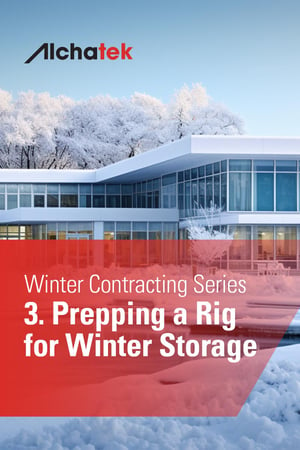
 As the holiday season approaches, the air becomes crisp with excitement, and retail establishments prepare for a surge in customer traffic. The festive spirit fills the air, but it also brings with it a set of unique challenges, particularly when it comes to maintaining safety and stability on your property.
As the holiday season approaches, the air becomes crisp with excitement, and retail establishments prepare for a surge in customer traffic. The festive spirit fills the air, but it also brings with it a set of unique challenges, particularly when it comes to maintaining safety and stability on your property.
Retailers face heightened risks during the holiday season. Beyond the cheer, sunken and unlevel concrete slabs on properties can create tripping hazards when crowded with shoppers. This can lead to injuries, lawsuits, and damage to a retailer's reputation and profits. Proactive maintenance of concrete surfaces is critical for mitigating these liabilities and keeping retail environments safe. Addressing hazards arising from uneven slabs protects customers and the bottom line this holiday season.
Elevated Risks During the Holidays
Tripping Hazards: With more people rushing to make purchases or simply enjoying the holiday spirit, the chances of someone tripping over uneven or sunken concrete slabs are significantly higher. This not only poses a danger to your customers but can also lead to potential injury claims against your establishment.
Injury Potential: In the midst of holiday shopping, the last thing anyone wants is an accident. Trips, falls, and injuries can not only mar the holiday experience for your customers but also result in costly legal consequences for your business.
Lawsuits: In the unfortunate event of an injury caused by uneven slabs on your property, the risk of facing a lawsuit looms large. Legal battles can be financially draining and detrimental to your reputation as a retail establishment.
Operational Disruption: Dealing with accidents and injuries during the holidays can disrupt your daily operations and dampen the holiday spirit for both customers and staff. This can lead to lost sales and customer dissatisfaction.
Concrete Leveling with Polyurethane
The risks associated with unlevel and sunken slabs during the holiday season are clear and present. However, there are effective solutions available to address these challenges proactively. A specialized two-component expanding foam can lift sunken concrete slabs back into place in wet or dry conditions. When pumped under sunken concrete, the controlled expansion force of the concrete leveling foam can lift virtually any settled slab precisely 1/8” to restore level surfaces.



 You've now gained valuable insights into the world of driveway concrete leveling, understanding the issues caused by sunken slabs, the options for repair, and how to choose the right path for your home. As you ponder your next steps, consider this important aspect: the expertise and assistance you need to get your driveway back to its prime condition.
You've now gained valuable insights into the world of driveway concrete leveling, understanding the issues caused by sunken slabs, the options for repair, and how to choose the right path for your home. As you ponder your next steps, consider this important aspect: the expertise and assistance you need to get your driveway back to its prime condition.
 When hiring a company to level sunken driveway concrete with polyurethane, homeowners should look for certain qualifications and ask key questions. This helps verify the contractor has the right expertise to tackle the project. By selecting a reliable, experienced professional, homeowners can feel confident about the outcome.
When hiring a company to level sunken driveway concrete with polyurethane, homeowners should look for certain qualifications and ask key questions. This helps verify the contractor has the right expertise to tackle the project. By selecting a reliable, experienced professional, homeowners can feel confident about the outcome.
 When it comes to concrete leveling, homeowners may wonder whether polyurethane or mudjacking is the better method. Both can lift and stabilize sunken slabs without having to demolish and replace the driveway. However, there are some key differences between these two common repair techniques.
When it comes to concrete leveling, homeowners may wonder whether polyurethane or mudjacking is the better method. Both can lift and stabilize sunken slabs without having to demolish and replace the driveway. However, there are some key differences between these two common repair techniques.
 Should you repair sunken slabs or replace the driveway completely? There are pros and cons to each approach.
Should you repair sunken slabs or replace the driveway completely? There are pros and cons to each approach.
 It's a scene that many homeowners dread: glancing out the window one day to discover large sunken areas in your once-smooth concrete driveway. These uneven sagging sections seem to appear out of nowhere, but in reality, are the result of a very common problem.
It's a scene that many homeowners dread: glancing out the window one day to discover large sunken areas in your once-smooth concrete driveway. These uneven sagging sections seem to appear out of nowhere, but in reality, are the result of a very common problem.
 For contractors seeking productive work during the slower winter months, Alchatek is here to help every step of the way.
For contractors seeking productive work during the slower winter months, Alchatek is here to help every step of the way.

 This guide outlines a step-by-step process for setting up your
This guide outlines a step-by-step process for setting up your 
 As temperatures drop, contractors in certain areas need to winterize their slab lifting rigs for storage during the off-season. Below are the step-by-step guidelines to properly store your equipment.
As temperatures drop, contractors in certain areas need to winterize their slab lifting rigs for storage during the off-season. Below are the step-by-step guidelines to properly store your equipment.
 It's time to revisit the idea of remaining profitable during the winter months, but where does one begin?
It's time to revisit the idea of remaining profitable during the winter months, but where does one begin?